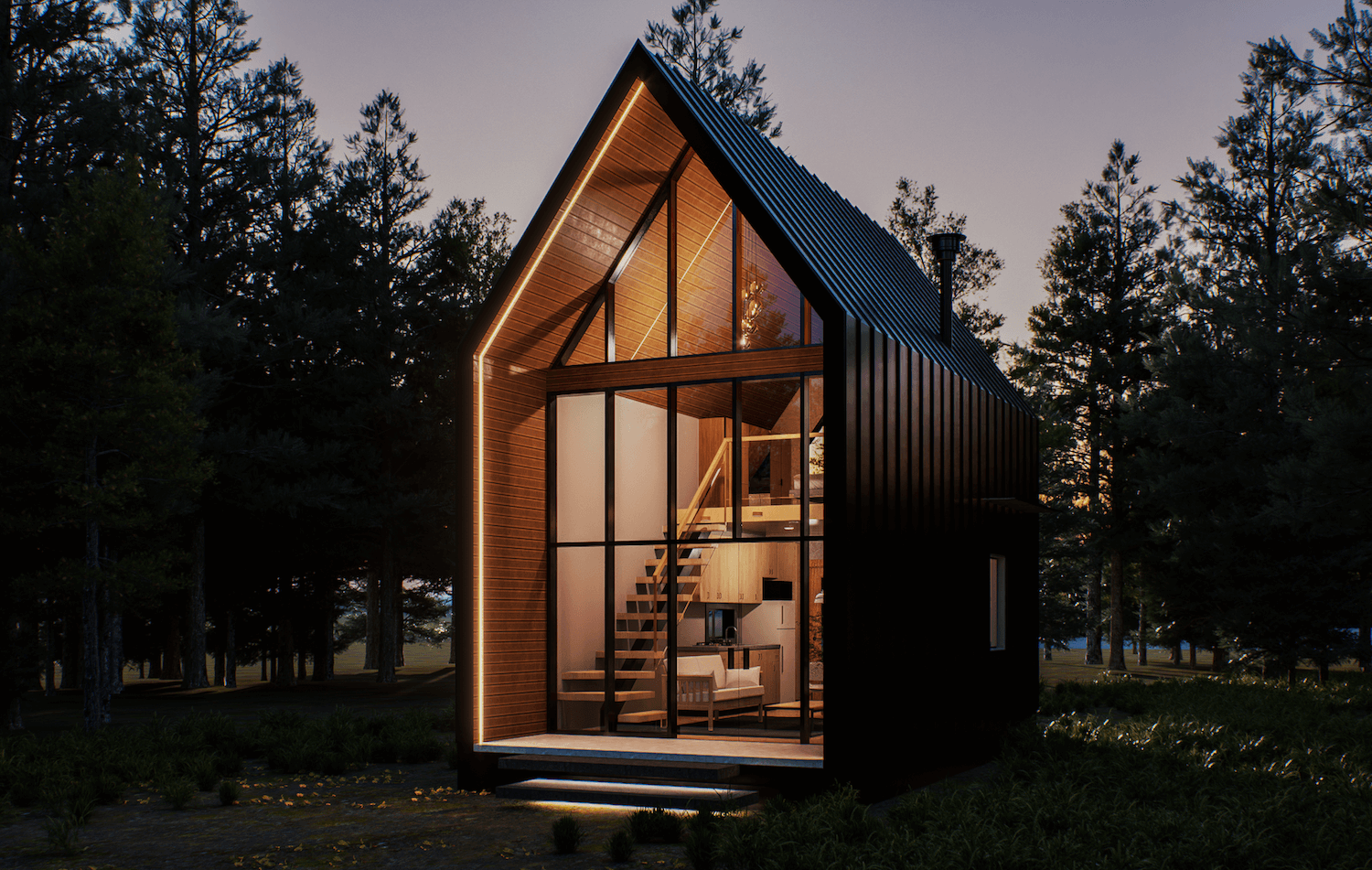In 2025, tiny house design trends are leaning heavily toward sustainability and smart living. You'll see a rise in reclaimed materials, energy-efficient appliances, and automated systems that enhance your comfort. Multi-functional furniture helps you maximize space, while open concept layouts create a seamless flow throughout your home.
Biophilic design, featuring large windows and natural textures, connects you to the outdoors, promoting tranquility. Minimalist aesthetics focus on clean lines and clutter-free spaces, making every inch count. These trends not only serve functionally but also enrich your lifestyle, setting the stage for a unique living experience. Discover what's shaping the future!
Key Takeaways
- Emphasis on sustainable materials, such as reclaimed wood and bamboo, to create eco-friendly tiny homes.
- Multi-functional furniture designs maximize space efficiency and minimize clutter in compact living areas.
- Open concept living spaces enhance natural light and foster a seamless flow between different areas of the home.
- Integration of smart home technology allows for convenient control of lighting, temperature, and security, improving overall comfort.
- Biophilic design elements, like large windows and natural materials, create a calming connection to the outdoors within tiny living spaces.
Sustainable Materials and Practices
As you explore tiny house design trends for 2025, you'll find that sustainable materials and practices are at the forefront. Homeowners are increasingly opting for reclaimed wood, bamboo, and recycled metal, prioritizing eco-friendly options. These materials not only reduce waste but also promote a healthier living environment.
Energy-efficient appliances and solar panels are becoming standard, allowing you to minimize your carbon footprint while saving on utility bills. Rainwater harvesting systems and composting toilets also contribute to sustainability, enabling you to live more off-grid.
Designs now emphasize natural light and ventilation, reducing reliance on artificial lighting and heating. By embracing these sustainable choices, you're not just contributing to environmental well-being, but also creating a comfortable, stylish, and responsible home.
Multi-Functional Furniture
Sustainable living goes hand-in-hand with smart design, and multi-functional furniture is a key trend in tiny house design for 2025. This innovative approach maximizes space while minimizing clutter, allowing you to fully utilize every square inch of your home. Imagine a sofa that transforms into a bed or a dining table that doubles as a workspace. These versatile pieces not only save room but also reduce the need for excess furniture.

Investing in multi-functional furniture means you're embracing practicality without sacrificing style. Look for designs that blend seamlessly with your decor, featuring sleek lines and elegant finishes. As you plan your tiny house, consider how each piece can serve multiple purposes, making your living space both efficient and inviting.
Open Concept Living Spaces
While maximizing space is essential in tiny house design, open concept living spaces take it a step further by creating a seamless flow between areas. This design trend eliminates unnecessary walls, allowing natural light to flood the interior and making the space feel larger. You'll find living, dining, and kitchen areas merging into one cohesive environment, perfect for entertaining or simply enjoying daily life.
With fewer barriers, you can easily adapt the space to your needs, whether you're working from home or hosting guests. Choosing versatile furnishings that complement this layout enhances its functionality. Embracing open concept living not only optimizes your tiny home but also fosters a sense of connection that makes every square foot count.
Smart Home Technology
In a world where convenience and efficiency reign, smart home technology is revolutionizing tiny house living. You can now control lighting, temperature, and security with just a tap on your smartphone. Integrating smart devices not only saves space but also enhances your lifestyle. Imagine waking up to automated blinds that let in natural light or a thermostat that adjusts to your preferences before you even step out of bed.
Voice-activated assistants can manage daily tasks, allowing you to focus on what really matters. Plus, energy-efficient appliances help you minimize your carbon footprint while maximizing comfort. By embracing smart technology, you're not just creating a home; you're crafting a seamless, modern lifestyle that perfectly fits your tiny living experience.
Biophilic Design Elements
Integrating smart home technology into tiny houses sets the stage for another design trend gaining momentum: biophilic design elements. This approach connects you to nature, enhancing your living experience while maximizing your limited space. Think large windows that invite natural light, green walls adorned with plants, and materials that reflect the outdoors, like wood and stone.
You might also consider using skylights to create a seamless connection with the sky above. Incorporating natural colors and textures can evoke a sense of calm and tranquility, making your tiny home feel more expansive. By blurring the lines between indoor and outdoor spaces, biophilic design can transform your tiny house into a sanctuary that nurtures both your well-being and your love for nature.

Vertical Living Solutions
One of the most innovative trends in tiny house design for 2025 is the embrace of vertical living solutions. You'll find that maximizing vertical space allows you to create functional, multi-purpose areas without sacrificing comfort. Think about incorporating lofted sleeping areas, which free up floor space for living and working.
Modular shelving and built-in storage can also help you utilize walls effectively, keeping your home organized and stylish. Additionally, consider the use of ladders or stairs with hidden compartments to add functionality without clutter. Vertical gardens can further enhance your space, providing fresh air and greenery. By embracing these solutions, you'll not only enhance your living experience but also create an inviting atmosphere in your tiny home.
Minimalist Aesthetic and Decor
As you embrace the tiny house lifestyle, adopting a minimalist aesthetic can transform your space into a serene sanctuary. By focusing on essential furnishings, you create an open, airy environment that promotes relaxation. Choose a neutral color palette with occasional pops of color to maintain visual interest without overwhelming your space. Opt for multifunctional furniture that maximizes utility while minimizing clutter.

Incorporate natural materials like wood and stone to add warmth and texture, making your tiny home feel inviting. Keep decor simple with a few carefully selected art pieces or plants that enhance your space without crowding it. Ultimately, a minimalist aesthetic not only emphasizes functionality but also fosters a peaceful atmosphere, allowing you to truly enjoy your tiny living experience.
Conclusion
As you explore tiny house design trends for 2025, embrace sustainability and innovation. Opt for multi-functional furniture to maximize space and incorporate smart home technology for convenience. Create an inviting atmosphere with biophilic design and maintain an open concept for fluidity.
Consider vertical living solutions to enhance functionality, all while keeping a minimalist aesthetic. By blending these trends, you'll craft a stylish, efficient home that reflects your values and lifestyle. Your tiny house journey starts now!






Share: